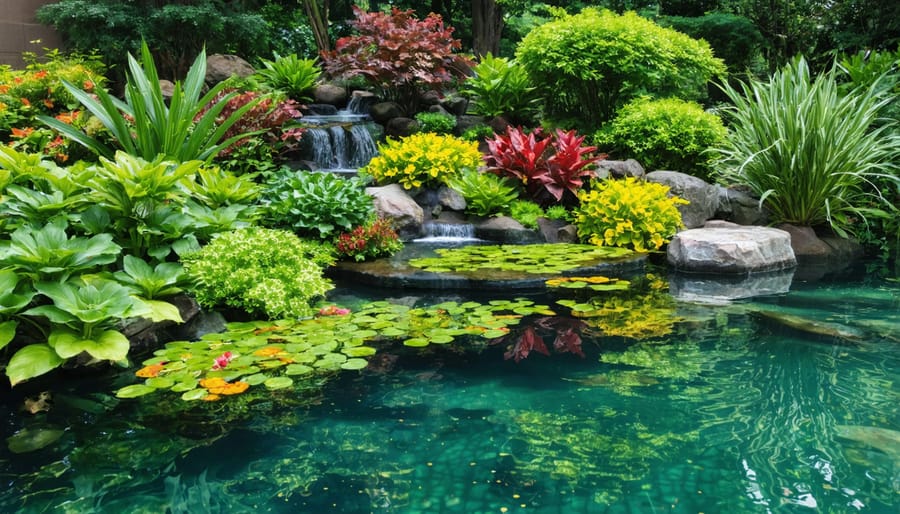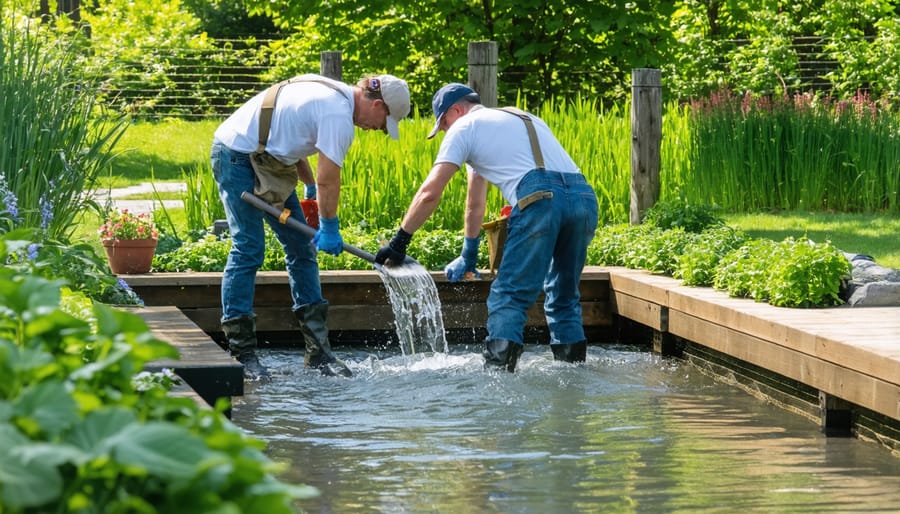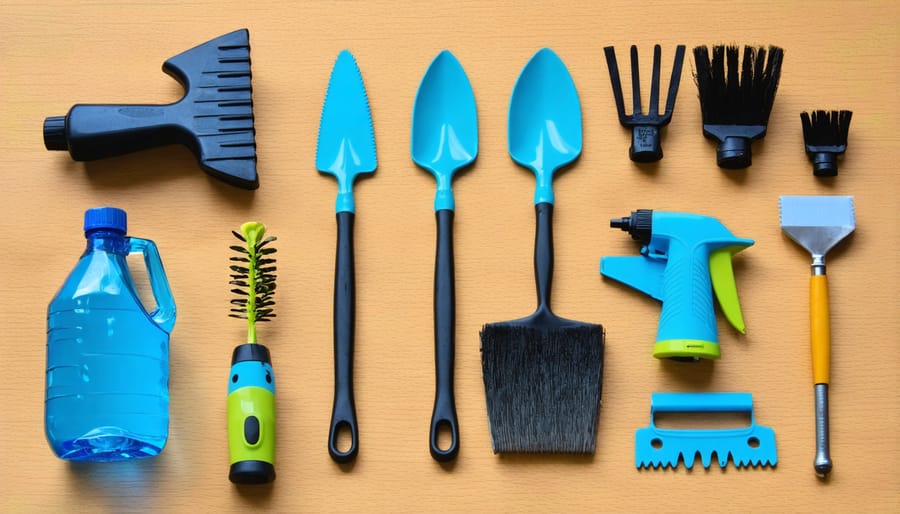
Transform Your Water Garden: This Summer’s Most Exciting Community Challenge
Transform your backyard into a competitive oasis by joining the thrilling world of gardening challenges. Whether you’re a seasoned green thumb or just starting out, these community-driven competitions offer a unique blend of friendly rivalry, skill-building, and horticultural mastery. From stunning water features to perfectly manicured landscapes, gardening challenges push creative boundaries while fostering connections with fellow enthusiasts.
Today’s gardening competitions have evolved beyond traditional flower beds, embracing sustainable practices, innovative water management, and artistic design elements. Participants showcase their expertise in categories ranging from native plant cultivation to water-wise landscaping, all while competing for recognition and prizes that celebrate gardening excellence.
Ready to dive in? Local garden clubs, botanical societies, and community organizations host regular challenges throughout the growing season. These events not only provide a platform to display your gardening prowess but also offer invaluable learning opportunities through workshops, expert feedback, and shared experiences with other passionate gardeners.
The real reward extends far beyond any trophy or ribbon – it’s about growing as a gardener, contributing to your community’s natural beauty, and being part of a movement that celebrates the art and science of creating spectacular outdoor spaces.
Why Join a Water Gardening Challenge?
Building Community Connections
Participating in gardening challenges creates bonds that extend far beyond the competition itself. When gardeners come together to share their experiences, troubleshoot problems, and celebrate successes, lasting friendships naturally bloom. Many participants report that their most valuable takeaways aren’t the prizes or recognition, but the connections they’ve made with fellow enthusiasts.
These challenges often lead to informal mentoring relationships, where experienced gardeners guide newcomers through common pitfalls and share time-tested techniques. Social media groups and local gardening clubs frequently emerge from these competitions, creating year-round support networks where members exchange tips, plants, and encouragement.
The learning opportunities are endless – from discovering new plant varieties to mastering innovative maintenance techniques. Group workshops and demonstration sessions commonly spring up around these events, turning individual challenges into community-wide learning experiences. Many participants find themselves becoming local experts, sharing their knowledge at garden shows and community events.
Best of all, these connections often lead to collaborative projects, garden tours, and even neighborhood beautification initiatives that benefit the entire community.
Skill Development Through Friendly Competition
Participating in gardening challenges offers a unique opportunity to transform your water garden skills through friendly competition. As you prepare for and engage in these events, you’ll naturally expand your knowledge of plant care, water quality management, and design principles. Fellow participants often share their tried-and-true techniques, from proper plant spacing to innovative filtration solutions.
The competitive environment encourages you to step out of your comfort zone and experiment with new aquatic plants or design elements you might not have considered before. You’ll learn to observe your garden more closely, identifying areas for improvement and developing a keen eye for detail. Many participants report that the feedback received during these challenges helped them master essential skills like proper pruning techniques and water balance maintenance.
Whether you’re a beginner or experienced gardener, the collaborative nature of these events creates an ideal learning environment. You’ll discover practical solutions to common problems and gain confidence in your gardening abilities, all while enjoying the supportive atmosphere of like-minded enthusiasts.
Popular Water Gardening Challenge Categories
Best Water Plant Display
Water plant display competitions showcase the artistry of aquatic gardening, bringing together enthusiasts who create stunning pond and water feature arrangements. Whether you’re new to water gardening or seeking fresh aquatic display inspiration, these events offer a fantastic opportunity to showcase your creativity. Participants typically arrange water lilies, lotus flowers, and other aquatic plants in harmonious compositions, considering factors like color balance, plant height, and seasonal blooming patterns. Judges look for healthy plants, creative use of space, and overall visual impact. The competition often includes categories for different pond sizes and styles, making it accessible to everyone from container garden enthusiasts to large pond owners. These events not only celebrate beautiful water gardens but also foster community learning and sharing of best practices.

Eco-Friendly Design Challenge
Ready to put your green thumb to the test? Our eco-friendly design challenge invites you to create a thriving aquatic ecosystem that’s both beautiful and environmentally responsible. By implementing sustainable water garden design principles, you’ll learn to balance aesthetics with ecological benefits.
Start by incorporating native aquatic plants that naturally filter water and provide habitat for local wildlife. Challenge yourself to use recycled materials for borders and creative water features. Consider installing a solar-powered pump system to reduce energy consumption while keeping your water circulating effectively.
The real test comes in creating a self-sustaining ecosystem. Can you achieve the perfect balance of fish, plants, and beneficial bacteria without constant intervention? Document your progress as you experiment with different combinations of floating, submerged, and marginal plants.
Remember, success isn’t just about creating a pretty pond – it’s about developing a system that works harmoniously with nature. Share your innovative solutions and learn from fellow participants as you work toward a more sustainable future in water gardening.

Fish and Plant Integration
Creating a harmonious balance between fish and plants is one of the most rewarding aspects of water gardening. Think of your pond as a living ecosystem where every element plays a crucial role. Fish provide natural fertilization for your aquatic plants through their waste, while plants help maintain water quality by absorbing excess nutrients and providing oxygen.
Start by selecting fish species that complement your plant choices. Koi and goldfish are popular options, but remember that koi can be rough on delicate plants. Consider incorporating hardy plants like water lilies and lotus around the pond’s edges, while keeping more delicate specimens in protected areas.
Layer your plants strategically – submerged plants like hornwort help oxygenate the water, floating plants provide shade for fish, and marginal plants create natural hiding spots. Aim for about 60% plant coverage to maintain healthy water conditions while leaving plenty of swimming space for your finned friends.
Monitor your fish-to-plant ratio carefully. Too many fish can overwhelm the ecosystem, while too few might leave plants lacking necessary nutrients. Start small and adjust gradually as your garden matures.
How to Prepare for Your First Challenge
Planning Your Entry
Success in a gardening challenge starts with thoughtful planning. Begin by carefully reading the challenge guidelines and requirements, noting any specific themes, size restrictions, or mandatory elements. Take photos of your garden space from multiple angles to help visualize potential changes and document your starting point.
Sketch your design ideas on paper or use a garden planning app to map out your vision. Consider seasonal timing – some plants need weeks or months to reach their full potential, so work backward from the judging date. Make a detailed timeline for preparations, planting, and maintenance tasks.
Create a comprehensive plant list that includes both existing and new additions. Factor in plant heights, blooming periods, and color combinations. Don’t forget to consider your local climate and the specific needs of each plant species. It’s often better to focus on fewer, well-maintained features rather than trying to incorporate too many elements.
Budget planning is crucial – list all needed materials, plants, and tools. Include a contingency fund for unexpected needs or replacement plants. Document your progress with regular photos and notes about what works and what doesn’t. This documentation not only helps with challenge submissions but provides valuable learning experiences for future projects.
Remember to plan for maintenance during the challenge period. Create a watering and care schedule that fits your routine and ensures your garden stays presentation-ready throughout the competition.

Essential Tools and Resources
To participate successfully in a gardening challenge, you’ll need a well-organized collection of essential tools and resources. Start with basic gardening tools: a reliable set of pruning shears, garden trowel, and hand fork for detailed work. A sturdy wheelbarrow or garden cart will help transport materials, while high-quality gardening gloves protect your hands during intensive work periods.
Documentation is crucial – keep a garden journal or digital log to track your progress. A good camera or smartphone for taking clear before-and-after photos is essential, as most challenges require visual documentation. Consider downloading a garden planning app to help with layout and plant tracking.
For plant care, invest in quality soil testing kits to monitor nutrient levels, and have basic pH testing supplies on hand. A collection of organic fertilizers and natural pest control solutions will help maintain garden health. Don’t forget proper plant markers or labels to identify different varieties.
Time management tools are vital – set up a calendar system specifically for your challenge deadlines and maintenance schedules. Create a dedicated storage space for your challenge supplies, keeping everything organized and easily accessible.
Most importantly, maintain a reliable water source and irrigation system. Consider installing a simple rain gauge to monitor precipitation levels, and keep basic measuring tools handy for tracking plant growth and garden development throughout the challenge period.
Tips for Challenge Success
Documentation Best Practices
Documenting your gardening journey is essential for tracking progress and sharing your success with the community. Start by creating a digital journal or dedicated social media account to chronicle your garden’s transformation. Take clear, well-lit photos from consistent angles to showcase the changes over time – aim for weekly shots at minimum, and don’t forget to capture both overall views and close-ups of specific features.
Keep detailed notes about your maintenance routines, plant selections, and any challenges you encounter. Include dates, weather conditions, and water parameters to help identify patterns and improvements. Consider using a simple spreadsheet to track important metrics like water clarity, plant growth rates, and wildlife visitors.
When sharing your progress, create engaging before-and-after comparisons that highlight your achievements. Include brief descriptions of the techniques you used and lessons learned along the way. Remember to document both successes and setbacks – these insights are valuable for the community and create authentic, relatable content.
For competition submissions, organize your documentation chronologically and create a concise summary that emphasizes your garden’s unique features and the specific challenges you overcame. This structured approach will make it easier for judges to evaluate your work and for others to learn from your experience.
Community Engagement Strategies
Building a thriving gardening community enhances the experience of any gardening challenge. Start by joining local gardening groups on social media platforms where you can share progress photos and ask questions. Many participants find Instagram and Facebook particularly useful for connecting with fellow enthusiasts and gaining inspiration from others’ projects.
Consider organizing local meetups where participants can connect with water garden experts and fellow gardeners. These gatherings can include plant swaps, maintenance tips sharing sessions, and problem-solving workshops. Don’t forget to document your journey through photos and videos – this not only helps track your progress but also inspires others in the community.
Create a dedicated hashtag for your gardening challenge to make it easier for participants to find and follow each other’s progress. Encourage everyone to share their successes and setbacks – there’s always something to learn from both! Remember to engage regularly by commenting on others’ posts and offering encouragement. This supportive environment makes the challenge more enjoyable and helps build lasting connections within the gardening community.
Water gardening challenges offer an incredible opportunity to grow both as a gardener and as part of a vibrant community. Through these friendly competitions, participants not only showcase their creativity and dedication but also learn valuable techniques from fellow enthusiasts. The rewards extend far beyond any prizes or recognition – you’ll gain confidence in your abilities, discover new plant varieties, and develop lasting friendships with others who share your passion.
Whether you’re a seasoned pond keeper or just starting your water gardening journey, participating in these challenges can transform your outdoor space into something truly extraordinary. The structured format provides clear goals and deadlines, helping you stay motivated and focused on improving your water garden throughout the season.
Don’t let uncertainty hold you back from joining your first challenge. Remember that every expert gardener started as a beginner, and the water gardening community is known for its welcoming and supportive nature. Start small if you prefer, perhaps with a single container water garden or a modest pond display. As your experience grows, so too will your ambitions and achievements.
Take that first step today – reach out to your local gardening club, join online communities, or contact nearby botanical gardens to learn about upcoming water gardening challenges. Your perfect opportunity to grow, learn, and connect with fellow water garden enthusiasts awaits. Let’s make your water garden dreams a reality through the excitement and inspiration of friendly competition.
